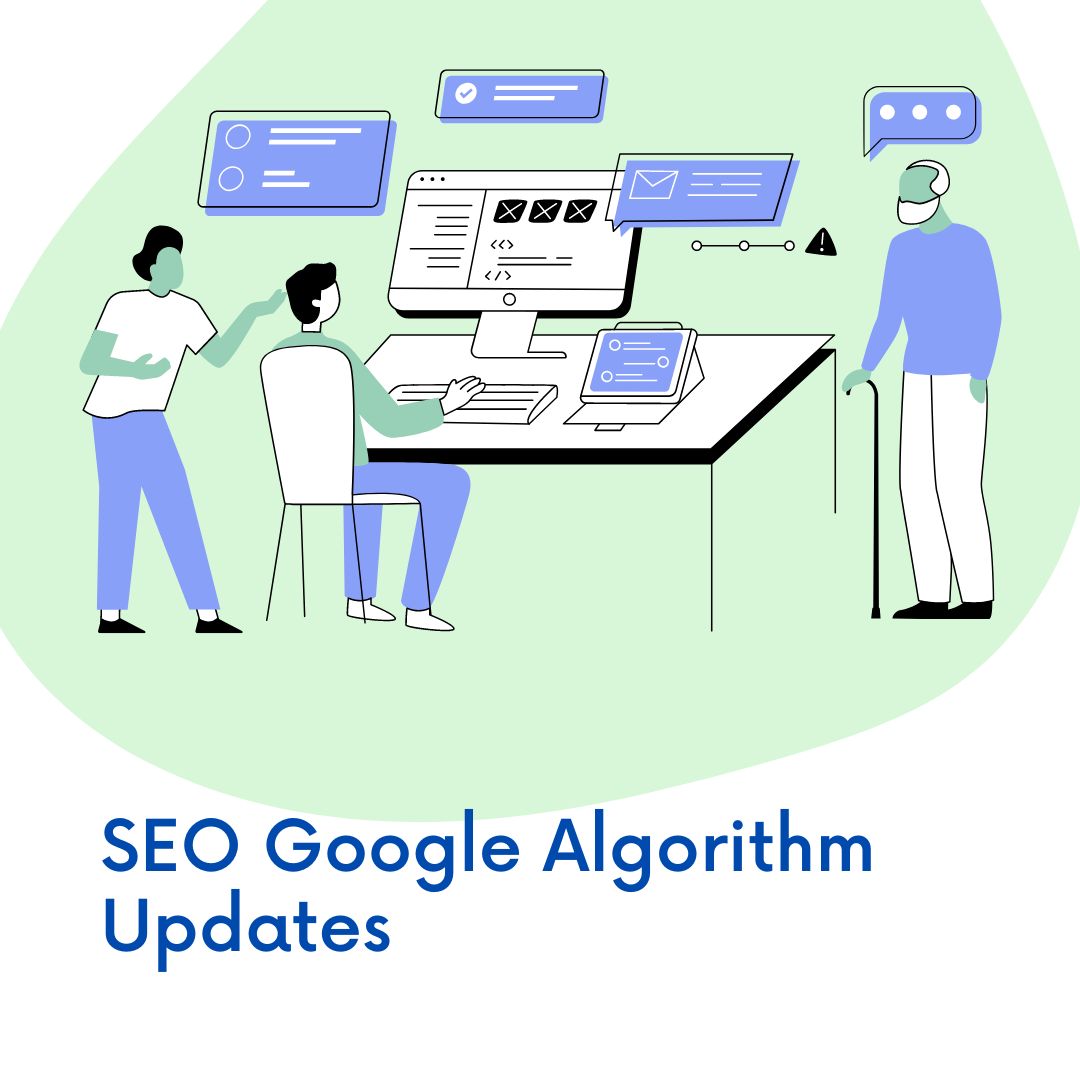In the ever-evolving world of SEO, staying up-to-date with Google’s algorithm updates is crucial. These updates can significantly impact your website’s ranking, visibility, and overall performance.
Since 2011, Google has rolled out numerous updates, each designed to improve the quality of search results and user experience.
This article will provide a thorough exploration of these updates, offering insights into their impact on SEO optimization and strategies for adapting to them.
Understanding Google Algorithm Updates
Google’s algorithm updates are complex changes made to how search engines rank websites. They are designed to ensure that users receive the most relevant and high-quality search results. These updates address various factors, including content quality, user experience, and website authority.
Why Should You Care?
- Improved Rankings: Understanding updates helps you optimize your site effectively, leading to better search rankings.
- Avoid Penalties: Staying informed prevents your site from being negatively impacted by algorithm changes.
- Enhanced User Experience: Updates often focus on improving user experience, which aligns with best practices for website management.
Key Google Algorithm Updates (2011-2022)
Here’s a look at the major Google algorithm updates:
1. Panda Update (February 2011)
- Objective: Reward high-quality content and penalize low-quality, thin content.
- Impact: Websites with low-value content saw a drop in rankings. Emphasis was placed on content originality, relevance, and user engagement.
Content Quality Focus (Panda, Helpful Content Updates)
- Impact: Websites with thin, duplicate, or low-quality content experienced significant drops in rankings. Content farms and sites prioritizing quantity over quality were especially hit hard.
- Recovery Method:
- Conduct a comprehensive content audit to remove or improve low-quality pages.
- Focus on creating high-value, original content that addresses user needs.
- Regularly update old content to keep it relevant and engaging.
2. Penguin Update (April 2012)
- Objective: Combat spammy link-building practices and reward natural, high-quality backlinks.
- Impact: Sites with manipulative link-building strategies faced penalties, while those with organic and authoritative links benefited.
Link-Building Practices (Penguin)
- Impact: Sites that relied on manipulative link-building practices, such as buying links or using link farms, faced penalties. Rankings dropped significantly for those with unnatural backlink profiles.
- Recovery Method:
- Perform a backlink audit to identify and disavow harmful, spammy links.
- Build natural, high-authority backlinks by creating content that earns links organically.
- Focus on relevance and authority when pursuing link-building opportunities.
3. Hummingbird Update (August 2013)
- Objective: Improve understanding of search queries and context, focusing on natural language processing.
- Impact: Enhanced the ability to handle conversational queries and long-tail keywords. Improved results for complex, multi-word searches.
Keyword Relevance and Query Understanding (Hummingbird)
- Impact: Google’s updates aimed at understanding natural language processing (NLP) and context affected sites that overly optimized for keywords without addressing user intent. Sites focused too much on keyword Optimization
- Recovery Method:
- Shift focus towards semantic search by addressing the user’s intent behind queries.
- Use long-tail keywords and conversational content that aligns with natural language queries.
- Optimize for topic clusters rather than relying on keyword-heavy approaches.
4. Pigeon Update (July 2014)
- Objective: Improve local search results by tying them more closely to traditional ranking signals.
- Impact: Local businesses saw changes in local search rankings. Importance was placed on local relevance and proximity.
Local Search Visibility (Pigeon)
- Impact: Local businesses experienced changes in local pack rankings based on their proximity, address, and relevance in local search results. This impacted local SEO efforts, especially for businesses in competitive areas.
- Recovery Method:
- Optimize your Google Business Profile with accurate business details, reviews, and location data.
- Focus on local SEO strategies, such as adding relevant location-based keywords, building citations, and encouraging customer reviews.
- Ensure NAP (Name, Address, Phone number) consistency across all platforms.
5. Mobilegeddon Update (April 2015)
- Objective: Promote mobile-friendly websites in mobile search results.
- Impact: Mobile-friendly sites gained higher rankings on mobile searches. Desktop-only sites faced reduced visibility on mobile devices.
Mobile Experience (Mobilegeddon)
Recovery Method:
- Ensure your site uses responsive design and is optimized for mobile devices.
- Improve mobile page speed and usability by eliminating unnecessary elements and optimizing images.
- Test your site with Google’s Mobile-Friendly Test tool and address any issues

6. RankBrain Update (October 2015)
- Objective: Introduce machine learning to better understand search queries and user intent.
Machine Learning and Query Processing (RankBrain)
- Impact: RankBrain introduced machine learning to better understand ambiguous or complex search queries. The focus shifted towards query intent and how users interact with search results, affecting rankings based on user behavior.
- Recovery Method:
- Create content that aligns with user intent by addressing common questions and offering useful insights.
- Focus on engagement metrics like click-through rate (CTR),
7. Possum Update (September 2016)
- Objective: Adjust local search results to provide more diverse and relevant local listings.
- Impact: Local businesses saw changes in visibility based on factors like address and search location. Reduced the impact of spammy local SEO tactics.
8. Fred Update (March 2017)
- Objective: Target low-quality sites focused on ad revenue rather than user value.
- Impact: Sites with excessive ads or low-quality content faced ranking drops. Emphasized the importance of user-centric content.

9. BERT Update (October 2019)
- Objective: Improve understanding of context in search queries using natural language processing.
- Impact: Google’s updates aimed at understanding natural language processing (NLP) and context affected sites that overly optimized for keywords without addressing user intent. Sites focused too much on keyword stuffing saw drops.
- Recovery Method:
- Shift focus towards semantic search by addressing the user’s intent behind queries.
- Use long-tail keywords and conversational content that aligns with natural language queries.
- Optimize for topic clusters rather than relying on keyword-heavy approaches.
Strategies for Adapting to Algorithm Updates
To stay ahead of Google’s updates, consider the following strategies:
- Focus on Quality Content: Regularly produce valuable, informative, and engaging content that meets user needs.
- Optimize for Mobile: Ensure your site is mobile-friendly and provides a seamless experience on all devices.
- Build Authoritative Links: Develop a strong backlink profile with high-quality, relevant links.
- Enhance User Experience: Improve site speed, navigation, and overall usability to align with user experience metrics.
- Stay Informed: Regularly review updates and adapt your SEO strategies to align with the latest best practices.
General Recovery Tips for All Algorithm Updates
- Monitor Analytics: Use tools like Google Analytics and Search Console to monitor traffic drops, keyword rankings, and potential penalties.
- Fix Technical SEO Issues: Ensure your site is technically sound with no broken links, duplicate content, or slow loading times. Technical issues often contribute to ranking losses.
- Stay Updated: Regularly follow Google’s announcements and Search Engine Optimization community discussions to stay informed about upcoming algorithm changes. This proactive approach helps mitigate risks.
- Adopt a User-Centric Approach: Ultimately, user experience is at the core of Google’s updates. Focus on meeting user expectations, providing valuable content, and optimizing for a seamless experience across all devices.
Final Words:
Google’s algorithm updates from 2011 to 2022 have transformed the SEO landscape, emphasizing the importance of quality content, user experience, and authoritative links.
By understanding these updates and implementing effective strategies, you can enhance your website’s visibility and performance in search results.
Keep evolving with the changes, and your SEO efforts will be more successful in navigating the dynamic world of search engine optimization.
Promote Your Laundry Business Online with Proven Online Marketing Strategies!
Unlock the Secrets of Google Ranking Optimization Strategies , Fast-Track Your Laundry Business Success with Mastermind Mr. Ram
Related Articles
Which AI Tools Are Used by Top SEO Agencies in the AI Transformation Era?
AI isn’t just disrupting SEO — it’s rebuilding it from the ground up. The world’s top SEO agencies are no longer relying on manual spreadsheets or...
Hire LLM Optimized SEO Service & Rank Faster | Get Yours
Every single day you postpone, your competitors are capturing market share in a new arena: AI Answer Engines. The digital landscape has fundamentally...
LLM Retrievable Content Creation Services: Future-Proof Your SEO with AI Agent-Ready Content
As search evolves beyond simple keyword matching, traditional SEO strategies are becoming obsolete. LLM retrievable content creation services are...
AI Powered SEO Services: Transform Your Digital Visibility and Rank Smarter
In today's fast-paced digital landscape, businesses struggle with traditional SEO methods that often fall short in efficiency and...
AI Powered Marketing for Laundry, Dry cleaners Services Business with Smart AI Automation
Why Read This? AI Marketing Is Changing Laundry Businesses Are you a laundry or dry cleaning business owner looking to grow faster in today’s AI era?...
AI-Driven SEO Services: A Game Changer for Laundry & Dry Cleaning Businesses
AI-Driven SEO Services: How Laundry & Dry Cleaning Businesses Win Online Imagine a customer urgently needing their clothes cleaned. They pull out...
